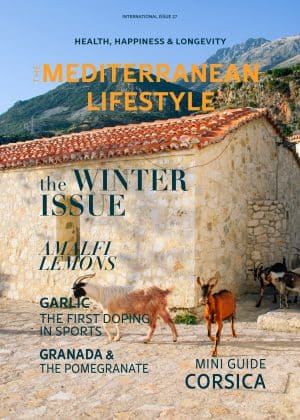IT IS SEPTEMBER AND A SMOKY AROMA HANGS IN THE AIR IN THE EXTREMADURA REGION OF SPAIN
There are two regions in Spain that grow the best peppers: Firstly, Murcia in the East is famous for sweet peppers where their thin and hot chili peppers have become milder and rounder over the centuries. The now popular bola peppers, (Capsicum annuum) also known as the rattle chili or cascabel chili with little to no heat, are hand-picked and placed in the sun to dry.
Secondly, Extremadura in the West produces the smoky variety, one being the famous Pimentón de la Vera. The La Vera region to the north of Cáceres is at the foot of the Sierra de Gredos and has a specially ideal micro-climate with very hot summers and just enough rain, which offers the perfect conditions for a rich harvest in late summer.

PAPRIKA IS CALLED THE POWDER OF RED PEPPER WHEN IT HAS DRIED AND GROUND
The pepper plant is native to South America and has spread throughout the world since its discovery. The famous spice was brought to Spain after the conquest of America by Christopher Columbus in 1493, where the seeds were delivered to the Catholic Monarchs. They were then successfully cultivated in the Royal Monasteries of Guadalupe and in the Yuste Monastery by the Jeronimos monks.
The idea was to replace the very expensive black pepper that was imported at that time from the East. Due to their simple cultivation and the climatic conditions, it ensured its rapid expansion in Spain through the course of the 16th century, when the paprika powder was initially used to preserve sausages and later also as a spice for stew dishes.
Pimentón de la Vera is the resulting product from the grinding of red peppers of the Ocales, Jaranda, Jariza, Jeromín, and Bola varieties. By botanical classification, chili peppers and all peppers are actually a fruit; they form from the ovary of a pollinated flower, have multiple fleshy layers and contain seeds at maturity.

With the seal of origin. Pimentón de la Vera is a traditional artisanal product, a unique composition with an equally unique manufacturing process. Therefore, since 1998, the name Pimenton de la Vera has been protected, (Denominación de Origen Protegida “Pimentón de la Vera“). Only paprika powder from this area and produced according to the established process are certified with the appropriate seal of origin, that qualifies their sale as Pimentón de la Vera.
After the harvest, the peppers are subjected to an age-old and completely manual drying and smoking process. Peppers are harvested when they reach their optimal maturation point, starting by the end of August, after planting at the beginning of May. Since not all peppers mature at the same time, the harvest is a spaced-out process that can take up to a few weeks and coincides with the first autumn rains, thus making it difficult to dry the fruits in the sun. This is how fire drying became a characteristic step in the production process.

The peppers are gently dried in special drying rooms on wooden grids. The wood of the holm oak is preferably used for this – coincidently, this is the tree whose acorns the pigs also eat for the delicious Ibérico ham. This process usually takes 10 to 15 days, during which the water content of the peppers drops from 80% to less than 10% as the fruits are turned regularly during the drying process.
After about five days, when the peppers have lost about 40% of their water content, the temperature in the drying room must be increased. Approximately 0.8 kilos of wood are burned per kilo of dried peppers. This unique skilled production method gives the paprika powder its three decisive characteristics: the intense aroma, the typical taste and its shiny red color.
The grinding process is divided into four steps. Once peppers are smoke-dried the pods are removed from the stalk, cored and then ground. While the peppers used to be ground in water-powered grain mills, now with electrification, industrial machines have taken over this work, which of course also led to increased yields.

Before filling into the world-famous tin cans, the desired typical degree of spiciness is achieved by blending the paprika powders from the cultivated varieties. Pimentón de la Vera is available in three versions: Pimentón Dulce (sweet) from the varieties Bola and Jaranda. Pimentón Agridulce (mild) with a slight spiciness from the varieties Jaranda and Jariza. Pimentón Picante (spicy) from the varieties Jeromín, Jariza and Jaranda.
The Spaniards love their paprika and use their beloved pimentón in the kitchen for many dishes like soups, sauces and stews which not only gives a great taste, but also the bright red color that we associate Chorizo or lomo embuchado, the Galician octopus or the sobrasada wouldn’t be the same without these smoky paprika aromas.








